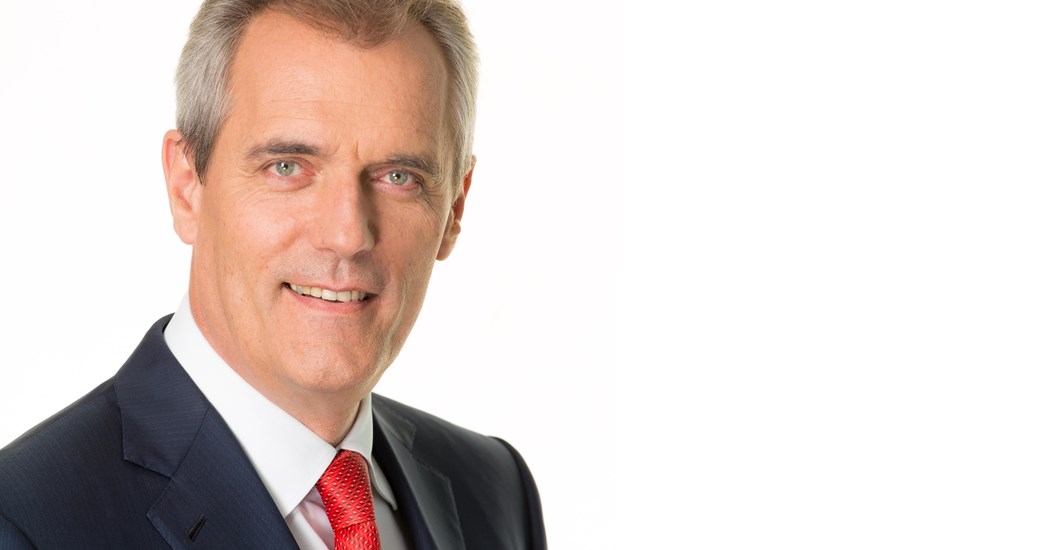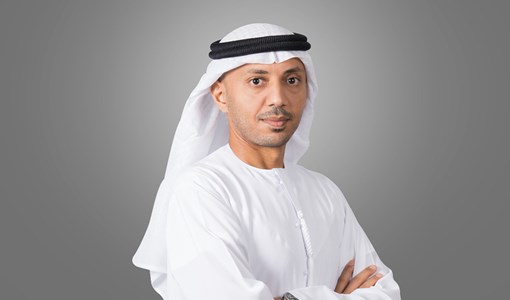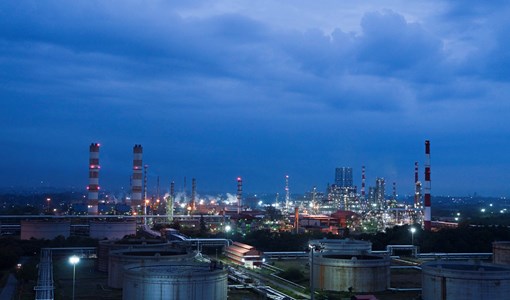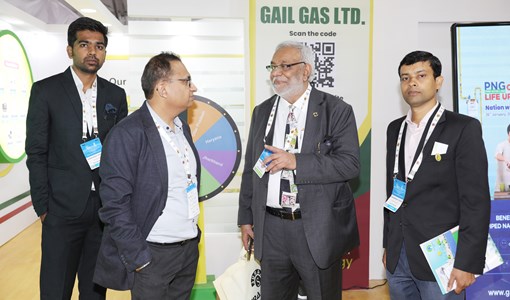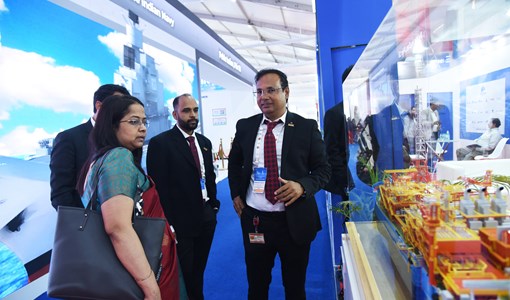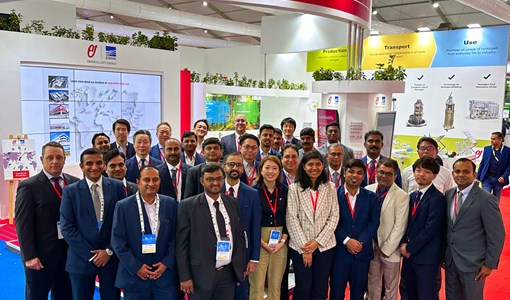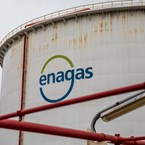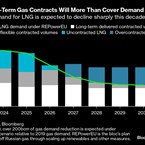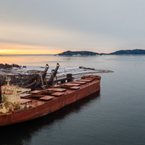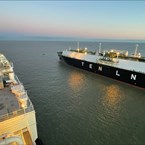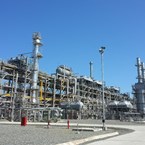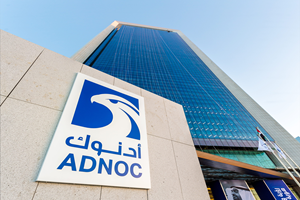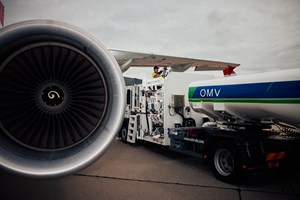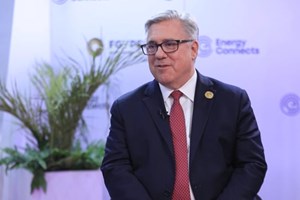Sustainable expansion into an evolving energy mix
OMV CEO Dr. Rainer Seele outlines to Pipeline Magazine’s Julian Walker the strategy his company employs to take in growth, innovation, digitalisation and transformation
Let me start by asking about OMV’s plans for operations in the Middle East?
Our plans for the Middle East? That’s simple. It’s all about applying our integrated business model. This means delivering added value from the well right through to the refinery. And that includes petrochemicals, an area in which we have world-class expertise.
The Middle East is rich in hydrocarbons and offers low production costs, so it is easy to see why we are pursuing further growth opportunities here in order to secure sustainable reserve replacement for our long-term future. The interest we acquired this year in ADNOC Refining has not only allowed us to expand our downstream business beyond Europe, but also increased our refining capacity by 40 per cent at a single stroke.
And we have been fortunate enough to sign MoUs with ADNOC to explore new opportunities for collaboration in the petrochemicals sector and our patented ReOil process. They benefit from our advanced technology and we benefit by expanding our petrochemical business and contributing to environmental protection by establishing a circular economy.
What does ReOil actually involve?
This innovative process converts plastic waste into high-quality synthetic crude, which can then be used to produce fuel or be used as feedstock for petrochemical plants so we can start the value chain again. A true example of a circular economy. Our MoU looks at establishing a joint working group to assess the feasibility of a scalable ReOil plant in the UAE.
You mention the UAE, is this OMV’s regional priority for developing projects?
At present OMV is active in the UAE, Yemen, the Kurdistan region of Iraq, Tunisia and Libya, having sold off our upstream business in Pakistan last year as part of the ongoing portfolio optimisation. We have a long history of partnerships in the Middle East and Africa.
But yes, one could say Abu Dhabi is our home away from home. Mubadala Investment Company of Abu Dhabi is OMV’s second largest shareholder and has held 24.9 per cent of OMV Aktiengesellschaft shares since 1994. Our partnership with leading petchem provider Borealis – in which Mubadala and OMV today hold 64 per cent and 36 per cent respectively – also dates back more than 20 years.
And Abu Dhabi is the main hub for all OMV activities in MEA, with a representative office here since 2007. Fast-forward to 2019 and OMV has a strong integrated position in Abu Dhabi along the value chain, ranging from upstream production to refining and trading including petrochemicals. This is the first time OMV has expanded its fully integrated business model beyond Europe.
What do you see as the long-term impact on OMV as a business following the agreements with ADNOC?
Our presence in Abu Dhabi is a key component of OMV’s Strategy 2025 as it will allow us to move closer to the attractive growth markets in Asia-Pacific. Naturally, that’s not the only impact. The recent acquisitions of a 20 per cent stake in the oil fields SARB and Umm Lulu and a 5 per cent interest in the Ghasha development project are critical to our long-term reserves as we have secured these licenses for the next four decades.
Given the abundance of the oil and gas reserves, I am confident that we will actually produce there for the full 40 years. The downstream interests in both refining and trading will also be key contributors to OMV for decades to come. Looking at the bigger picture, our extensive expertise in upstream-downstream petrochemical integration is at the heart of our sustainable success. And applying this model in our Abu Dhabi hub will give us a bridge to the promising Asian markets.
Talking of Asia, OMV, Mubadala and Chandra Asri Petrochemical have signed an agreement to explore opportunities in the petrochemical sector in Indonesia. How is that project progressing?
Yes, we signed an MoU in July. It’s still early days, but we have set up working groups for evaluation. The location of Indonesia makes this an appealing prospect along with the fact that Chandra Asri is the country’s largest integrated petrochemical company and has plans to build a world-scale petrochemical complex. We are looking forward to productive discussions.
Which other partnership agreements reached in the last twelve months are likely to have the greatest impact on OMV’s revenue stream?
We have a highly diversified geographical portfolio. Our partnerships in Central and Eastern Europe, the North Sea and Russia are just as important as those in Asia-Pacific and the Middle East and Africa. In the last year alone we have signed major deals in Malaysia, Russia, New Zealand and the UAE, for example.
Partnerships are an essential part of our strategy, whereby we focus on fostering longstanding relationships and business models for the mutual success of both parties. In addition to relationships with important partners such as ADNOC in Abu Dhabi and the National Oil Corporation in Libya, we also have close partnerships with non-OPEC members like Gazprom in Russia and Equinor in Norway.
The combination of different countries, partnerships and activities is as crucial to our success as our integrated business model. Under our new strategic approach we have not only increased our production by 60 per cent over the past three and a half years, but we have slashed production costs from $13.2 to just $6.9 a barrel on average.
This puts us among the top of our industry. OMV’s approach has always been to stand by its partners even in turbulent times and to be proactive for our partners precisely when others may be pulling back somewhat. This has secured us solid partnerships among equals that go back many years. And enabled us to keep setting new records in our company’s earnings.
Where do you see the greatest increase in demand for energy coming from in the near future?
The sharpest increase will come from growing markets and economies such as those in Asia, unless trade conflicts hamper growth. The biggest single shift will be the exit of coal for power generation in order to reduce CO2 emissions – and I am confident that coal will be replaced by gas, especially in Europe. From the way things look today, it is unrealistic to think of a future without crude oil and natural gas. The International Energy Agency (IEA) forecasts that oil and gas will still account for more than 50 per cent of the world’s energy supply in 2040.
Natural gas in particular will be essential for a very long time as it is the most cost-efficient choice in terms of greater energy efficiency and lower greenhouse gas emissions. If we were to replace coal with natural gas across the whole of Europe, we would be able to cut 50 per cent of total CO2 emissions in the field of power generation. This makes natural gas the ideal partner for renewables.
Is the industry equipped to respond successfully to any increase in requirements?
If we look back to three years ago, the oil price lagged below $30 per barrel and this led to a decline in the operating cash flow of a lot of companies. This meant that they simply didn’t have the spending power to make adequate investments in development projects.
This is now having a delayed impact on the supply side. In the meantime, companies in our sector have restored their financial power through cost-cutting programmes and a rebound in the oil price. That said, the trend I have observed is that our industry is increasingly backing gas projects and neglecting the crude value chain somewhat. In addition to the financial challenges, our industry must get to grips with digitisation and increase its investment here so that expensive development projects can be realised in a way that actually makes sense in economic terms.
Basically, we need to get ready for a low oil-price environment and that’s why our industry should invest in new technologies and capture the potential of digitisation to gain cost leadership. Then you’re the last man standing.
Does the move to construct Austria’s largest solar plant, alongside Verbund, indicate a diversification of energy sources?
In our first renewable project with the Austrian electricity company Verbund – one of the largest hydropower producers in Europe – we are going to build Austria’s largest photovoltaic plant, which will meet 10 per cent of the energy needs of our upstream production facilities in Austria.
This will allow us to reduce our CO2 emissions by 12,000 tonnes a year and help us achieve our strategic sustainability goal of reducing OMV’s carbon footprint by 19 per cent by 2025.
In addition, OMV and Verbund are evaluating an option to build an electrolytic hydrogen production facility. This technology takes power from renewables and uses it to split water via electrolysis. OMV is primarily researching the use of hydrogen to hydrogenate CO2, in order to reduce carbon emissions from industrial facilities.
So yes, we are diversifying our energy sources in a way that embraces a balanced energy mix. It doesn’t have to be either/ or when it comes to fossil fuels and renewables – the best way forward is to make space for both.
How committed is OMV towards limiting the environmental impact of its projects?
Well, we’re one of the few companies in our sector to have set measurable sustainability targets – in fact we have specified 15 of them we need to achieve by 2025. Our CDP Climate Change score puts us in the top eleven companies in the global oil and gas sector and we’re the only Austrian firm listed on the Dow Jones Sustainability Index. As a socially responsible company, we have to strike the right balance between affordable energy, security of supply, and climate protection. We have committed to investing up to EUR 500 million by 2025 to implement innovative energy solutions.
A major project apart from ReOil, which turns used plastics into fuel or petchem feedstock, is the CoProcessing technology directed at reducing greenhouse gas emissions by processing biogenic feedstocks together with fossil based raw materials in an existing refinery. Climate action is essential and that’s why it requires more than a knee-jerk response. Any measures proposed must be well thought out in terms of their technical, economic and social consequences.
And they must be feasible. This means they should not jeopardise prosperity, economic stability or social harmony. We need to take a realistic view of our future energy demand and the possible sources of supply. As mentioned earlier, all of the forecasts by the IEA – including those that are fully in line with the objectives of the Paris Agreement – work off the basis that more than 50 per cent of global energy demand will still have to be met by fossil fuels in 2040. With this in mind, OMV believes it has a responsibility to work today on ensuring that the energy for a better life is also available tomorrow. Let’s not forget that any oil or gas that we will need in 10 or 20 years has to be found today. So we need to draw on every innovation available to achieve this balancing act.
On the topic of innovation, how is digital technology transforming the energy industry?
Every industry needs to drive digitisation in order to succeed in the future. Maybe Industry 4.0 and IIoT (Industrial Internet of Things) started out as buzzwords, but they are already game-changers in terms of efficiency and competitiveness. Digitisation has actually been around for decades at OMV, originating from automation. The difference now is that we have centralised our initiatives. In upstream alone we have 90 projects underway worldwide – from the Drilling Cockpit that already today allows experts in Vienna to give instant feedback to any rig in the world, right through to work on a Drilling Robot that could facilitate a fully automated rig. And downstream has already seen impressive results by applying algotrading, platform solutions and data analytics. In fact, it is OMV’s commitment to innovation and new technologies that makes us such an attractive partner. Even before the digitisation era, our technologies have been proven to continuously improve product quality and service standards, minimise costs, create new business opportunities and lower emissions. We do this by investing in research and development and fostering strategic partnerships with universities, research institutions and selected industrial partners worldwide.
Is the industry agile and flexible enough to take advantage of the new opportunities these technologies can provide?
This is not a question of ability but of necessity. The competition will require this agility. We are quite fortunate in that we already have an established culture of challenging the status quo and embracing technological advances.
What can the oil and gas business do to attract the next generation of talented workers, who are likely to be very tech-aware?
Well, given the fact that we are all preparing for digitisation, it’s obvious that our industry is also competing with other sectors in the war for talent. It’s very important that we all do more to improve the way our industry is perceived. If we don’t polish our image, I think we’ll struggle to attract highly talented people. What I have learned over the years is that if you offer a job that is challenging and also rewarding, then that’s the right fi t for people looking to join our industry. We encourage an entrepreneurial culture, autonomy and flexibility. What’s more, if you have even a little bit of pioneering spirit and would like to explore the world then we are a great choice. After all, this is a truly global industry and that’s one reason why people enjoy working for us.
I’d like to end with a look at your results. OMV recorded a 44 per cent increase in second-quarter operating income recently; what were the major factors behind these positive figures?
Above all, it’s our integrated business model. This allows us to balance risks and make the best use of opportunities. In addition, we were able to increase production, cut costs and we have been able to keep the utilisation rate of our refineries at an extremely high level of 96 per cent in this quarter. KPIs aren’t the only metric of a company’s success, but of course great results are a welcome confirmation that we are on the right track.
KEEPING THE ENERGY INDUSTRY CONNECTED
Subscribe to our newsletter and get the best of Energy Connects directly to your inbox each week.
By subscribing, you agree to the processing of your personal data by dmg events as described in the Privacy Policy.

Energy Workforce helps bridge the gender gap in the industry
Mar 08, 2024
EGYPES Climatech champion on a mission to combat climate change
Mar 04, 2024
Fertiglobe’s sustainability journey
Feb 29, 2024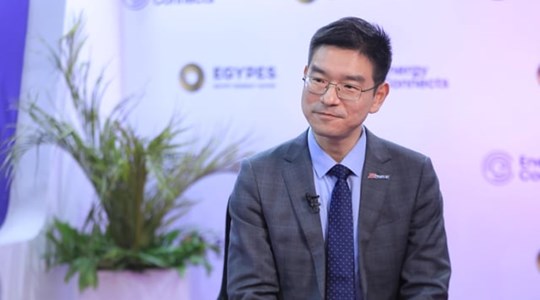
Neway sees strong growth in Africa
Feb 27, 2024
P&O Maritime Logistics pushing for greater decarbonisation
Feb 27, 2024
India’s energy sector presents lucrative opportunities for global companies
Jan 31, 2024
Oil India charts the course to ambitious energy growth
Jan 25, 2024
Maritime sector is stepping up to the challenges of decarbonisation
Jan 08, 2024
COP28: turning transition challenges into clean energy opportunities
Dec 08, 2023
Why 2030 is a pivotal year in the race to net zero
Oct 26, 2023Partner content

Ebara Elliott Energy offers a range of products for a sustainable energy economy

Essar outlines how its CBM contribution is bolstering for India’s energy landscape

Positioning petrochemicals market in the emerging circular economy

Navigating markets and creating significant regional opportunities with Spectrum


